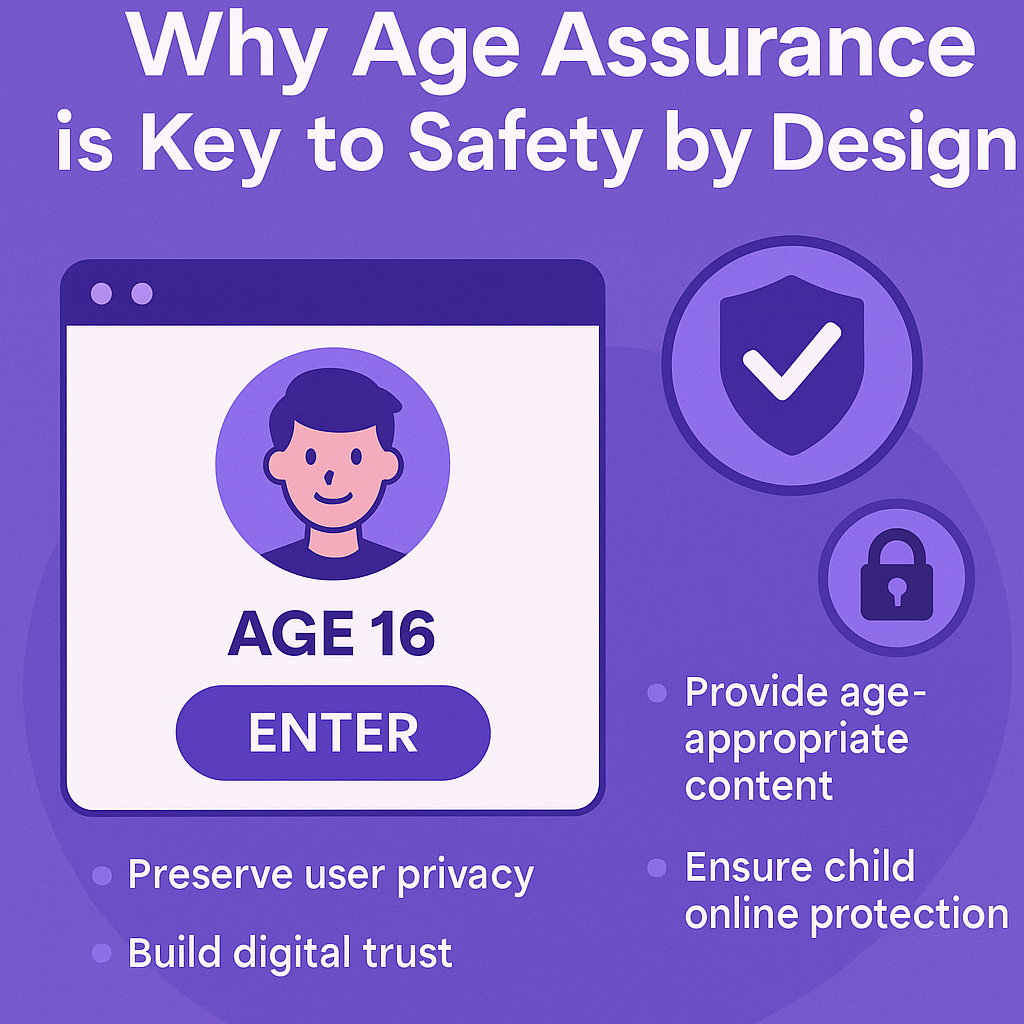Why Age Assurance Technology Is Key to Safety by Design and Age-Appropriate Online Experiences
Published on 20 November, the UK Government’s Draft Statement of Strategic Priorities for Online Safety outlines its goals for creating safer digital environments. At the core of these priorities is age assurance technology—a key enabler of age-appropriate, privacy-first online experiences.
Understanding the Government’s Online Safety Priorities
- Safety by Design: Build safer platforms by default, especially for children, and eliminate safe havens for illegal content such as abuse or disinformation.
- Transparency & Accountability: Ensure tech companies are held responsible for their safety outcomes.
- Agile Regulation: Monitor and tackle emerging threats like AI-generated content and fraud.
- Inclusivity & Resilience: Promote digital literacy and social resilience against online harms.
- Innovation: Encourage the growth of online safety technologies to protect users and promote digital trust.
The Role of Safety by Design
Safety by Design is a proactive framework that integrates safety features from the start of digital product development. However, designing effective safeguards depends on knowing the age of users. Without it, platforms can’t provide suitable protections for children, teens, or adults.
What Is Age Assurance?
Age assurance includes technologies that verify or estimate a user’s age to ensure access to age-appropriate content. These include:
- AI-powered age estimation (facial or behavioural)
- ID verification checks
- Email-based age estimation
Unlike outdated self-declaration methods (“Are you 18+?”), modern age assurance is privacy-preserving, accurate, and designed to minimise friction for users.
How Age Assurance Supports Safer Online Experiences
1. Preventing Harmful Content Exposure
Platforms can restrict adult content, ads, and interactions for under-18s, shielding them from inappropriate material.
2. Tailored Experiences by Age
Children can access curated content and strict privacy controls, while teens may receive tools like reporting features or limited messaging options.
3. Empowering Parental Controls
Accurate age data enables effective parental oversight while supporting a child’s independence.
4. Legal Compliance
Regulations like the UK Online Safety Act and EU Digital Services Act require platforms to design with minors in mind. Age assurance is mandatory for regulatory compliance.
5. Building Trust and Transparency
With stronger protections, users and parents can trust platforms more, strengthening brand loyalty and industry credibility.
Balancing Safety with Privacy
Effective age assurance must respect user privacy. At 18Verified, our solutions include anonymised and GDPR-compliant tools like:
- Email-based age estimation
- Photo ID matching
- Facial age estimation
- Mobile network and credit card checks
The Future of Age Assurance Technology
As safety standards evolve, age assurance is becoming the digital default. Platforms that adopt these technologies now will stay ahead of compliance demands, avoid fines, and provide better user experiences.
Powered by AI and machine learning, tools like email-based age estimation are fast, frictionless, and preferred by users worldwide. With 99.94% of users having email access, it’s the most inclusive option on the market today.
Conclusion: Age Assurance Is a Digital Imperative
Age assurance technology isn’t just about compliance—it’s about responsibility. It’s the cornerstone of delivering age-appropriate, inclusive, and safe online spaces. As outlined in the Government’s strategy, platforms must act now to embed age assurance into their services by design.
At 18Verified, we help businesses implement highly effective age assurance systems that comply with UK regulations while protecting user privacy. Contact us today to learn more.

